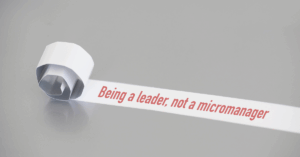
How Communication Mistakes Can Break Your Remote Workflow
Avoid common communication mistakes with your remote team. Improve your workflow with these 9 practical, doctor-friendly tips.

Remote teams are now part of everyday life for many doctors and healthcare professionals. Virtual Medical Assistants (VMAs) help streamline clinical and administrative tasks so you can focus on patient care. But with all the advantages of remote work come new challenges—especially when it comes to avoiding communication mistakes.
In a traditional clinic, clearing up a misunderstanding takes seconds. But when your team is miles away, small communication mistakes can snowball into missed deadlines, errors in patient care, or unnecessary stress.
If you’re managing a VMA or plan to hire one, avoiding these communication pitfalls is critical.
Click here to learn more about 7 Communication Mistakes to Avoid with your Remote Team
It’s not about the tools; it’s how you use them. Even the most experienced healthcare professionals can fall into patterns that cause confusion or delay. Here are 9 communication mistakes you’ll want to avoid when working with your Virtual Medical Assistant.

You might know your clinic’s systems inside and out, but your VMA can only work with what you share. One of the most common communication mistakes is assuming your assistant understands all the context.
Whether it’s a specific EMR workflow or how your office handles cancellations, take time to explain it clearly. Never rely on memory or past conversations—clarify expectations in real time.

Your VMA won’t know your preferred communication style unless you tell them. Should they send updates daily or weekly? Is email better than chat for urgent concerns?
Without ground rules, small issues can be misinterpreted or overlooked. Prevent misunderstandings by deciding on standard communication times, platforms, and escalation procedures from the start.

Slack, WhatsApp, Email, Zoom, Google Chat—it’s easy to think more tools equal better communication. But jumping between platforms often creates more noise than clarity.
One of the more overlooked communication mistakes is spreading updates across too many channels. Pick one or two main platforms for work communication. Consolidation helps reduce missed messages and boosts productivity.

Your VMA is there to make your life easier—not to wait for instructions every step of the way. While it’s important to be clear, hovering over every task can slow things down and harm morale.
This communication mistake sends the message that you don’t trust your VMA. Instead, explain the outcome you want, give the necessary tools or SOPs, and allow room for them to take initiative.

Out of sight shouldn’t mean out of mind. A quick weekly sync with your VMA can prevent long-term problems. These don’t need to be long calls—even a 10-minute catch-up helps realign priorities, clarify instructions, and give feedback.
Without regular check-ins, small communication mistakes go unchecked and can turn into bigger workflow issues over time.

Saying, “Can you handle the intake for that patient?” is not the same as, “Please call the patient, confirm their insurance, and enter the info into AthenaHealth.”
Vague instructions are one of the fastest ways to slow down your remote team. Be as specific as possible, especially when assigning new tasks. Over time, your VMA will learn your patterns—but until then, clarity is key.

A written Standard Operating Procedure (SOP) document is one of the best tools for clear communication. It sets the standard for how tasks should be done and prevents your VMA from having to guess or ask repeatedly.
When you don’t have documented processes, more communication mistakes happen because each task is open to interpretation. Invest time in creating a basic SOP—it saves time in the long run.

If your VMA is in a different time zone, you’ll need to adjust how and when you communicate. One of the easiest communication mistakes to make is expecting an immediate reply when it’s 2 AM for them.
Set a shared time zone for meetings and deadlines. Be upfront about your hours of availability, and ask for theirs. This prevents delays and improves respect on both sides.

Your VMA may work remotely, but they’re still a core part of your practice. One of the more subtle communication mistakes is excluding them from team huddles, updates, or celebrations.
A simple “thank you” during a team call or a shout-out in a chat group goes a long way. Inclusion builds trust, and trust builds better communication.
At the end of the day, communication isn’t just a soft skill—it’s a clinical necessity. Every instruction, every update, and every message shapes how your practice delivers care. When communication mistakes pile up, your workflow suffers. Tasks fall through the cracks. Patients feel the impact. And your stress levels go up. But with a few intentional changes, you can avoid the common pitfalls and set your VMA—and your entire team—up for success.
You don’t have to manage your clinic and your remote team on your own. Communication mistakes are often what stand between you and a smooth, stress-free workflow.
At Core Virtual Solutions, we match you with dedicated Virtual Medical Assistants who know how to work with you—not just for you. From patient coordination to billing and admin tasks, our VMAs are trained to follow clear systems and help eliminate costly miscommunication. Click here to book a FREE Discovery Call and find out how the right VMA can improve your team communication and recharge your entire practice.

Avoid common communication mistakes with your remote team. Improve your workflow with these 9 practical, doctor-friendly tips.

Discover why setting boundaries after work matters for healthcare professionals and how VMAs help protect personal time.

Cut costs without compromising care. Discover how telehealth support helps streamline your practice efficiently.

Discover why setting boundaries after work matters for healthcare professionals and how VMAs help protect personal time.

Keep virtual medical assistants motivated with simple strategies that boost performance, loyalty, and patient care.

Discover doctor wellness tips to help physicians reduce burnout, manage stress, and protect their energy daily.